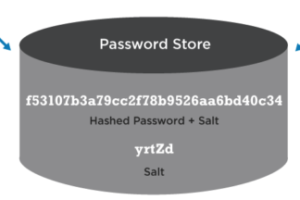
How To Hide Your Bash Command History
It’s probably not a good idea to completely turn off bash history, one of the reasons bash history exists as a reference to mistakes or useful past commands you can’t recall. But there are also legitimate reasons who don’t want to log some bash commands for security or privacy reasons. Here are 3 ways you can temporarily turn off bash history logging:

Converting Mp4 to WebM using FFmpeg
For the longest time (still is to a smaller extent), gif ruled the interweb of video-based memes. But the problem with gif is they slow to load files are usually much larger than a file of the same video with a lower quality and slow loading. Even with large bandwidth gif file tends to load slower. One solution, though probably not the original intention, was to use WebM format.

How to enable ALPN on NGINX
LPN (Application-Layer Protocol Negotiation) is a TLS extension that allows an efficient way to negotiate encrypted traffic between the browser and the server. In order to enable ALPN on a server, a web server needs to have HTTPS configured and support the HTTP/2 protocol. ALPN doesn’t provide any additional security benefit over HTTPS, it allows a browser to take advantage of speed benefit of HTTP/2 by lowering the initial handshake latency.

How not to store user passwords
If you are running a Web App and you are storing user passwords, it is very easy to get things horribly wrong, it’s better to use third-party sign-in services like Facebook, Twitter or Google. In my experience, I have seen a lot of Web-Apps and Services going this route, not because they are lazy – but because they are offloading an aspect of your app that is incredibly difficult to get it right and secure.

How to flush DNS cache on Mac OSX
In order to use the internet, we need a DNS server to resolve domain names to IP address, in the early days of the internet you DNS server address all most always used to be your ISP’s DNS server. Nowadays we have many options with a lot of free and open DNS servers, most notably Google DNS (8.8.8.8 or 8.8.4.4) and OpenDNS (208.67.222.222 or 208.67.220.220) to name a few.

How to Automate SSH login
I have to remotely log in to a lot of servers quite often, which is why I have setup several ssh related aliases on `~/.bash_profile` (Mac) or `~/.profile` (Ubuntu) to automate my login process so that I could simply type `sg` on the terminal and get logged in to my remote server without any prompts. But this is the last part. Let’s start from the beginning.